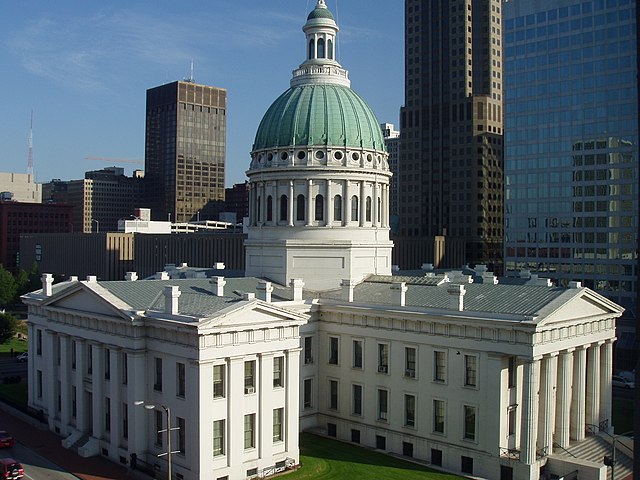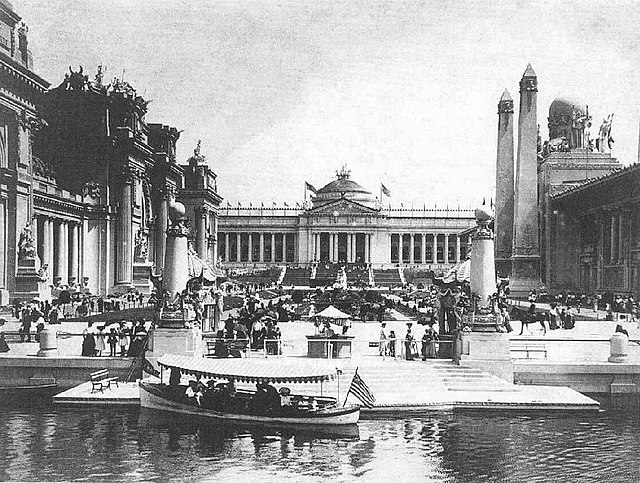The history of St. Louis began with the settlement of the area by Native American mound builders who lived as part of the Mississippian culture from the 9th century to the 15th century, followed by other migrating tribal groups. Starting in the late 17th century, French explorers arrived. Spain took over in 1763 and a trading company led by Pierre Laclede and Auguste Chouteau established the settlement of St. Louis in February 1764. It attracted French settlers leaving Illinois after their defeat in the Seven Years' War. The city grew in population due to its location as a trading post on the Mississippi River, as the western fur trade was lucrative. The city played a small role in the American Revolutionary War and became part of the U.S. through the Louisiana Purchase in 1803.
The original St. Louis street grid, ca. 1780
The first Catholic church in St. Louis, built in 1770
The Battle of St. Louis on May 26, 1780
The St. Louis Courthouse, completed in 1828
Louisiana Purchase Exposition
The Louisiana Purchase Exposition, informally known as the St. Louis World's Fair, was an international exposition held in St. Louis, Missouri, United States, from April 30 to December 1, 1904. Local, state, and federal funds totaling $15 million were used to finance the event. More than 60 countries and 43 of the then-45 American states maintained exhibition spaces at the fair, which was attended by nearly 19.7 million people.
Poster for the Exposition painted by Alphonse Mucha
The Government Building at the Louisiana Purchase Exposition
Palace of Liberal Arts
Festival Hall








